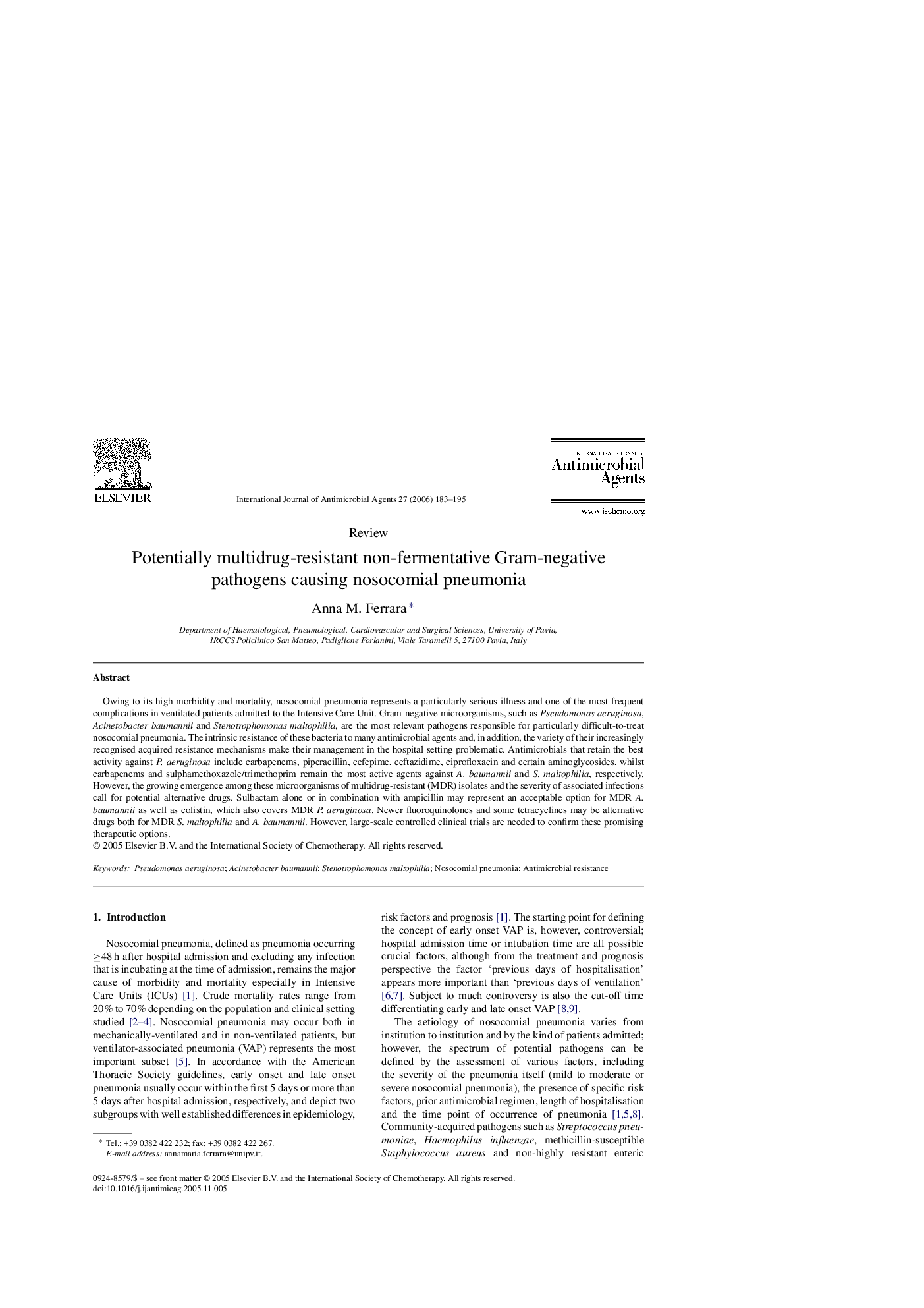| Article ID | Journal | Published Year | Pages | File Type |
|---|---|---|---|---|
| 3361178 | International Journal of Antimicrobial Agents | 2006 | 13 Pages |
Owing to its high morbidity and mortality, nosocomial pneumonia represents a particularly serious illness and one of the most frequent complications in ventilated patients admitted to the Intensive Care Unit. Gram-negative microorganisms, such as Pseudomonas aeruginosa, Acinetobacter baumannii and Stenotrophomonas maltophilia, are the most relevant pathogens responsible for particularly difficult-to-treat nosocomial pneumonia. The intrinsic resistance of these bacteria to many antimicrobial agents and, in addition, the variety of their increasingly recognised acquired resistance mechanisms make their management in the hospital setting problematic. Antimicrobials that retain the best activity against P. aeruginosa include carbapenems, piperacillin, cefepime, ceftazidime, ciprofloxacin and certain aminoglycosides, whilst carbapenems and sulphamethoxazole/trimethoprim remain the most active agents against A. baumannii and S. maltophilia, respectively. However, the growing emergence among these microorganisms of multidrug-resistant (MDR) isolates and the severity of associated infections call for potential alternative drugs. Sulbactam alone or in combination with ampicillin may represent an acceptable option for MDR A. baumannii as well as colistin, which also covers MDR P. aeruginosa. Newer fluoroquinolones and some tetracyclines may be alternative drugs both for MDR S. maltophilia and A. baumannii. However, large-scale controlled clinical trials are needed to confirm these promising therapeutic options.
